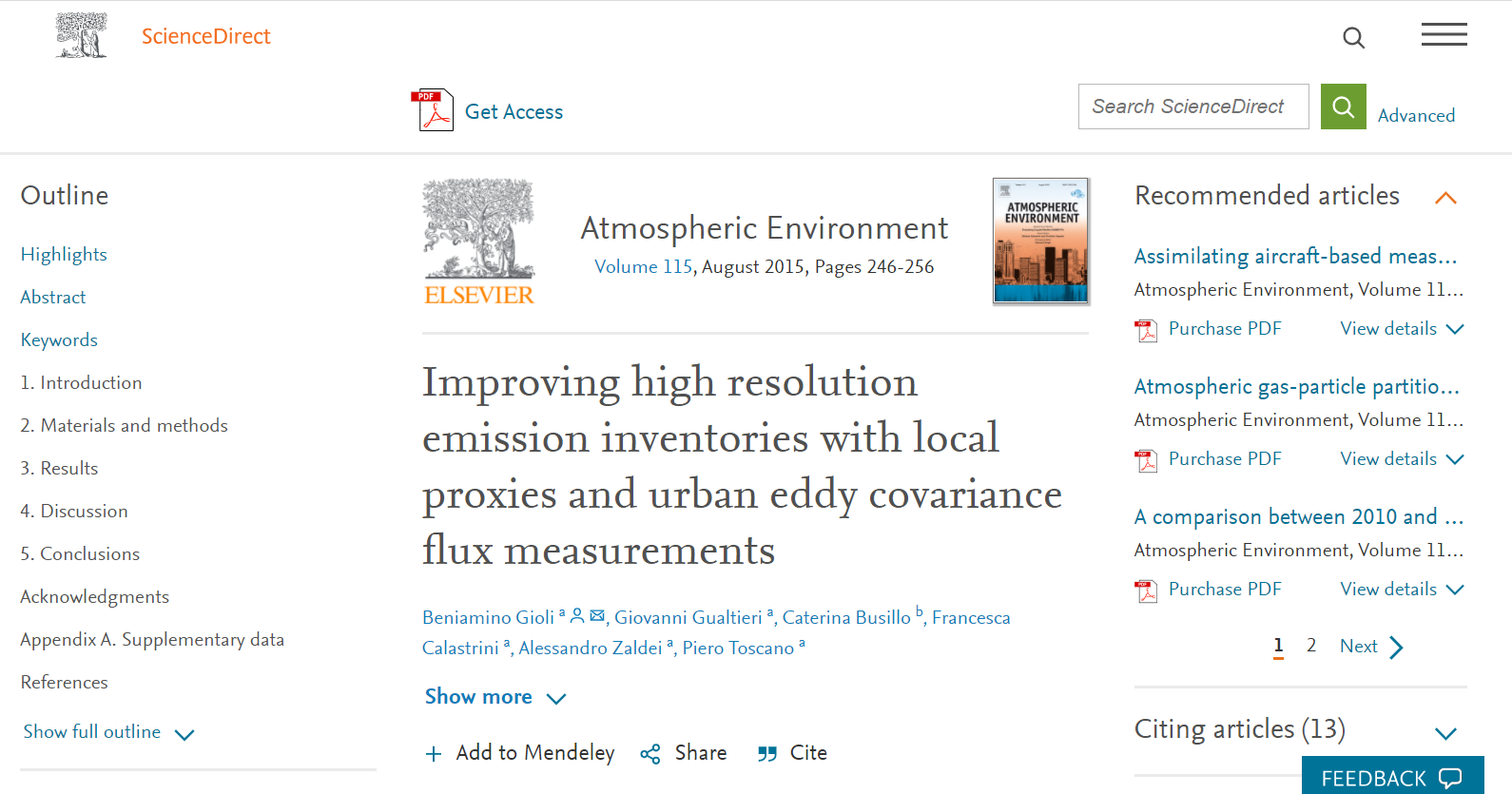Emission inventories are the fundamental official data on atmospheric emissions of pollutants and greenhouse gases at a variety of spatial and temporal scales worldwide. This study makes use of direct CO2 emission measurements made with the eddy covariance technique over a completely urbanized area, with no confounding effect of vegetation, where emissions are mostly controlled by natural gas combustion processes and road traffic. Objectives are:
- to validate top-down spatially and temporally disaggregated emission inventories at yearly, monthly, weekly and hourly time scales;
- to quantify the improvement achieved in official inventories when replacing built-in temporal disaggregation proxies with customized proxies based on local data of road traffic and natural gas consumption.
We demonstrate that the overall performance of official inventory at yearly scale is rather good with an emission of 3.08 g CO2 m−2 h−1 against a measured emission of 3.21 ± 0.12 g CO2 m−2 h−1. When temporally disaggregating annual emissions, the agreement between inventory and observations always significantly improves when using local proxies, by 47% (from 0.70 to 0.37 g CO2 m−2 h−1 RMSE) at monthly scale, by 26% (from 0.58 to 0.43 g CO2 m−2 h−1 RMSE) at weekly scale, and by 32% (from 1.26 to 0.85 g CO2 m−2 h−1 RMSE), at hourly scale.
The validity of this analysis goes beyond CO2 since the temporal proxies used by the inventories mimic the intensity of specific emission processes, therefore species emitted in the same processes as CO2, would benefit from the improved parameterization of temporal proxies shown here.
These results indicate that effort should be put into developing improved temporal proxies based on local rather than national scale data, that can better mimic site dependent behaviors.
